I was fascinated by this destination from the very beginning! Although I had been to Iceland twice and I suspected that they had something in common, my curiosity pushed me to discover, one day, the Faroe Islands as well.
I was like a sponge this birthday holiday, because I didn’t know anything anymore, but I wanted to know everything…
ABOUT THE FAROE ISLANDS
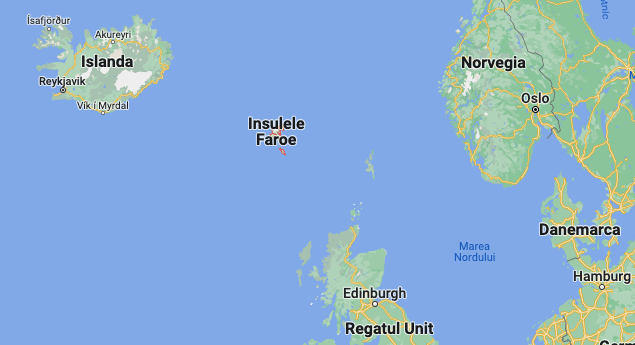
A little above Scotland, a little below Iceland and a little to the left of Norway. There are the Islands. Two hours by plane from Copenhagen.
The Faroe Islands belong to Denmark, but beware, they are not part of the EU – just so you know not to have problems as I had with my phone or the cigarettes in my suitcase. You can read about it here.
The islands are 18 in number, of which 17 are inhabited. In the case of some, I don’t even know how to say this thing about being inhabited because, for example, on the Island Koltur there are only two people! Two. That’s it. Husband and wife. Trying hard to rebuild the village that once existed (with 80 people, sheep breeders).
No point on the Islands is more than 5 kilometers from the sea.
Faroe Islands means mountainous islands, with a maximum height of 880 meters, practically some big rocks and… bare, without any trees on them. I realized late that there are no trees on my path. Due to the extreme oceanic climate, with strong, sharp winds, which throw large amounts of sea salt into the air, the islands do not favor the growth of trees. There are very few trees and I understand that most are brought from other countries with a similar climate, such as Alaska or Tierra del Fuego.
By the way, I saw in Tørshavn, the capital of the Islands, a project carried out by the Danes to develop a kind of park with trees, like a small forest. Good for them!
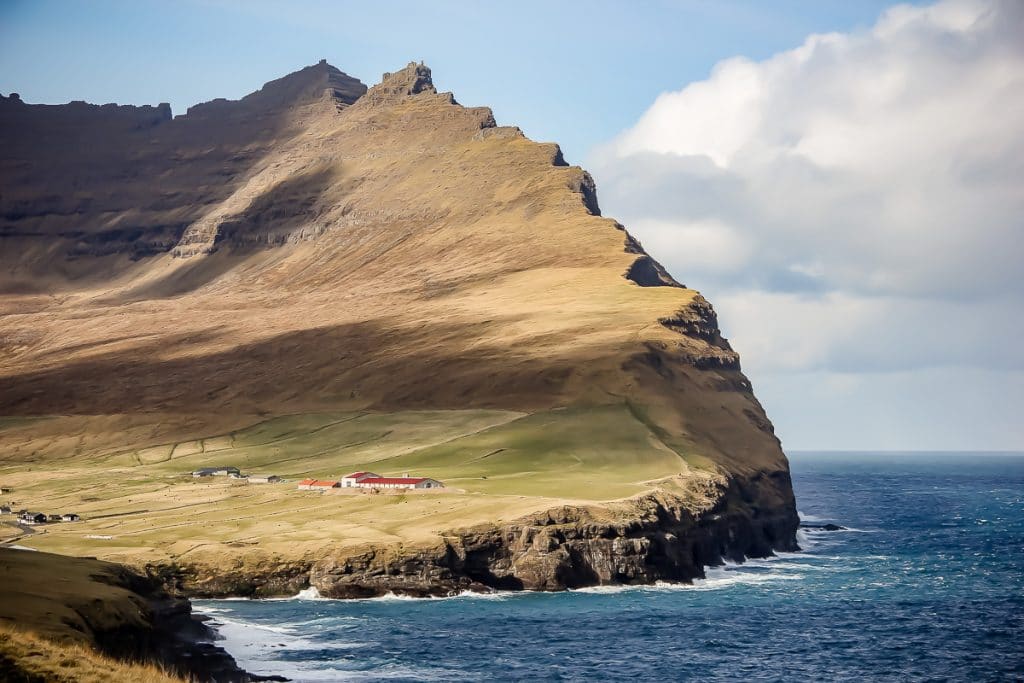
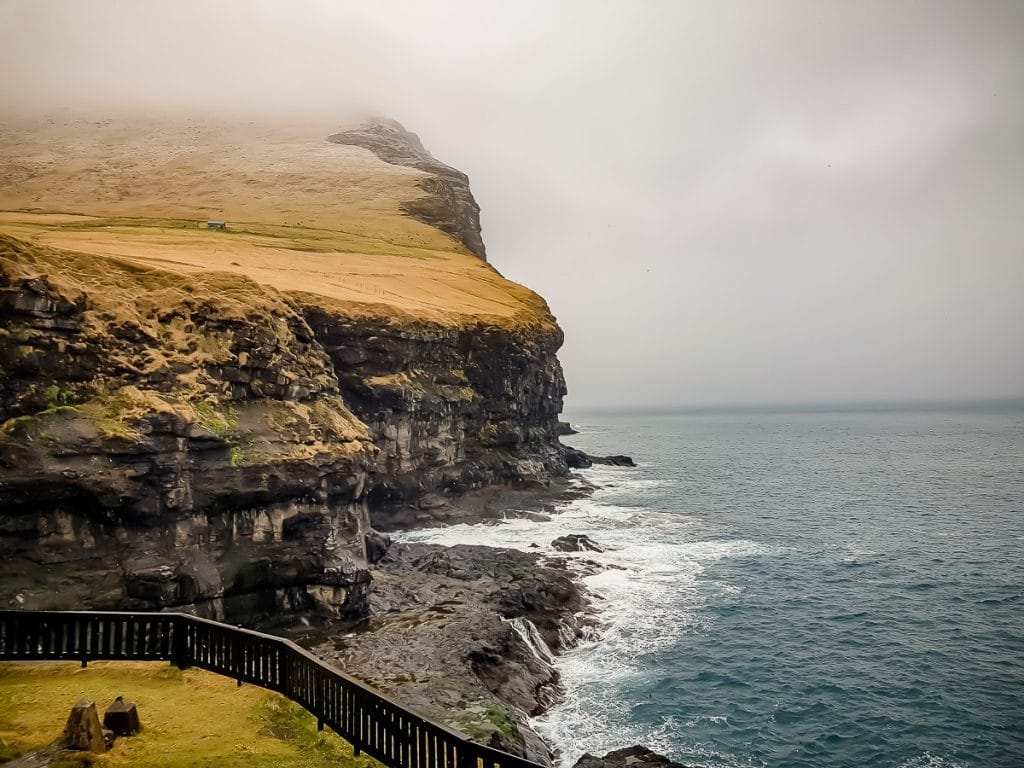
However, the steep cliffs by the ocean are absolutely impressive and they can both fascinate and terrify you!
And the coastal roads, where dozens of small waterfalls wash the mountains, flowing into the sea.
When it rains, these streams of water become waterfalls and the scenery is spectacular!
THE PEOPLE OF THE FAROE ISLANDS
The population of the Islands is only 53,800 inhabitants. But their number is far exceeded by… sheep (there are about 80,000 sheep!). The word “Faroe” means, in fact, “sheep island”, so that is clear to us from the very beginning J.
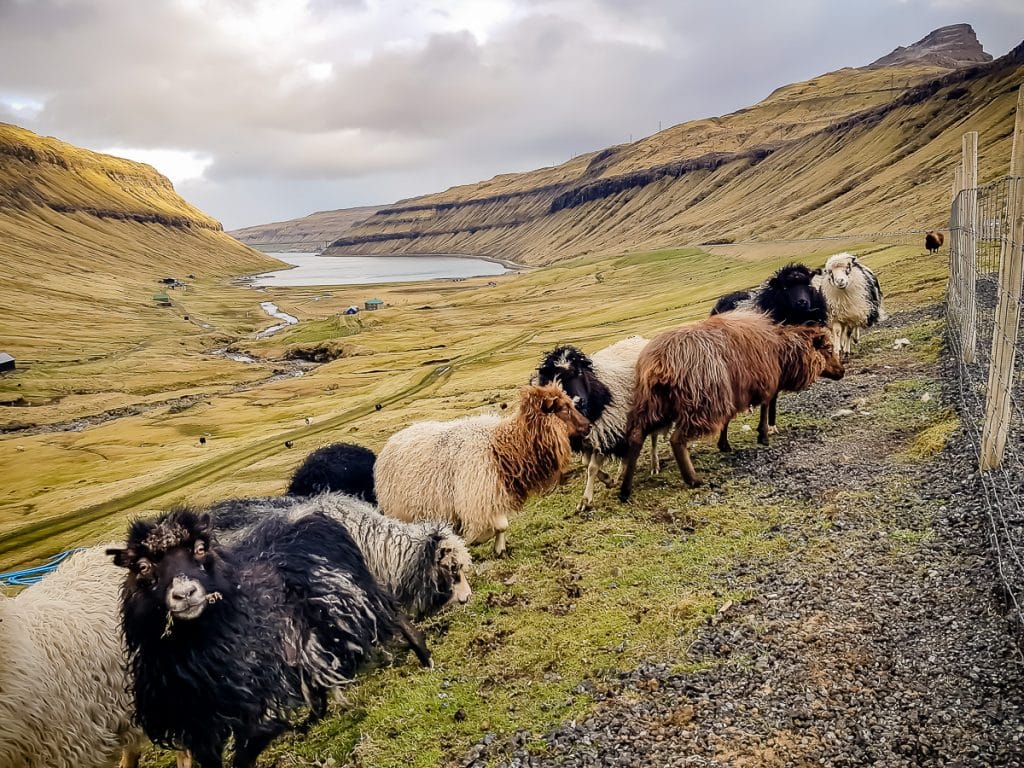
The truth is that I saw sheep every step of the way! They roam the country freely and are only gathered by the owners in October.
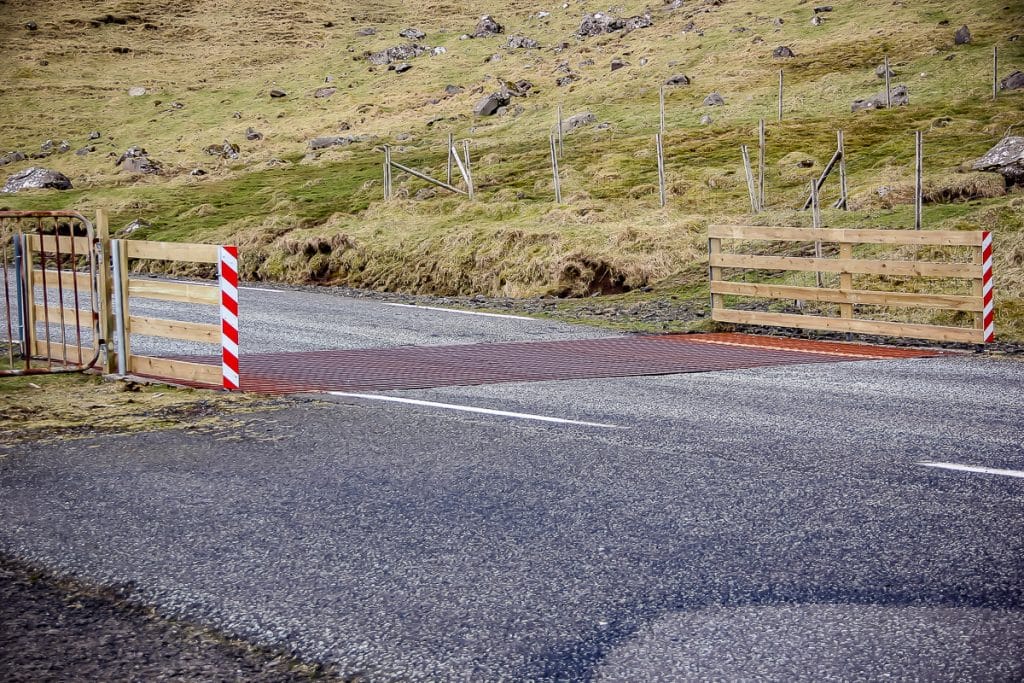
To prevent them from entering the villages, people made such a grid at each entrance. Which the sheep can’t jump over. They wouldn’t be so stupid as to try to pass through it.
There is only one village that accepts sheep inside and it seems that I came across it, because otherwise I cannot explain the audacity of this sheep, despite the proximity of the car to it:
No way this ballerina would shy away! Maybe she’s the bodyguard of the place.
But let’s get back to our sheep: the people of the Islands.
What shocked me at first sight was the large number of children per family. The average is 3 children per family, but Sámal, my guide, told me that many have 4 children each! He himself has 3 children and each child has, in turn, 4 children! It’s the highest rate in Europe!
With so many children, God, I saw so many kindergartens! I wasn’t taking one step and I came across yet another kindergarten.
However, the Faroese have a big, a huge problem! And now I hope that the ladies will open their eyes well:
The Faroese men are looking for women! Yes, yes, you read that right! These people need girlfriends, wives, because the number of men is higher than the number of women. According to statistics, they are in need of about 5,000 women!
I say let’s go, why wait?? But quickly, so that others don’t get there before us: the Faroese have already taken Thai and Filipino wives – who have become the most important ethnic minority!
I don’t know much about the men here, but I do know that the Faroe Islands gave the world some important names: they have a Nobel Prize Laureate – the physicist Niels R. Finsen, who received the Prize for Medicine in 1903. The footballer Gunnar Nielsen, the only Faroese man who played in the Premier League. Or Livar Nysted (51 years old), holder of 5 world records in ocean rowing. The man is super cool! Along with three others, he crossed the Atlantic Ocean from New York to Great Britain in a rowing boat, breaking a world record that had not been broken for 114 years!
Mr. Nysted is also a painter, so he is also an artist, not only an athlete.
I haven’t heard of other brave Faroese, but well, it’s important for me to find a beautiful, smart and… well, a rich one hihi.
RELIGION IN THE FAROE ISLANDS
If there was something that I saw as often as kindergartens, those were the churches! In every city, in every village, there is at least one church. I understand there are 60 churches. And… 25 priests. That’s it. However, they have all the masses. Where there is no priest, there is someone who replaces him.
80% of the Faroese are Protestant Lutherans.
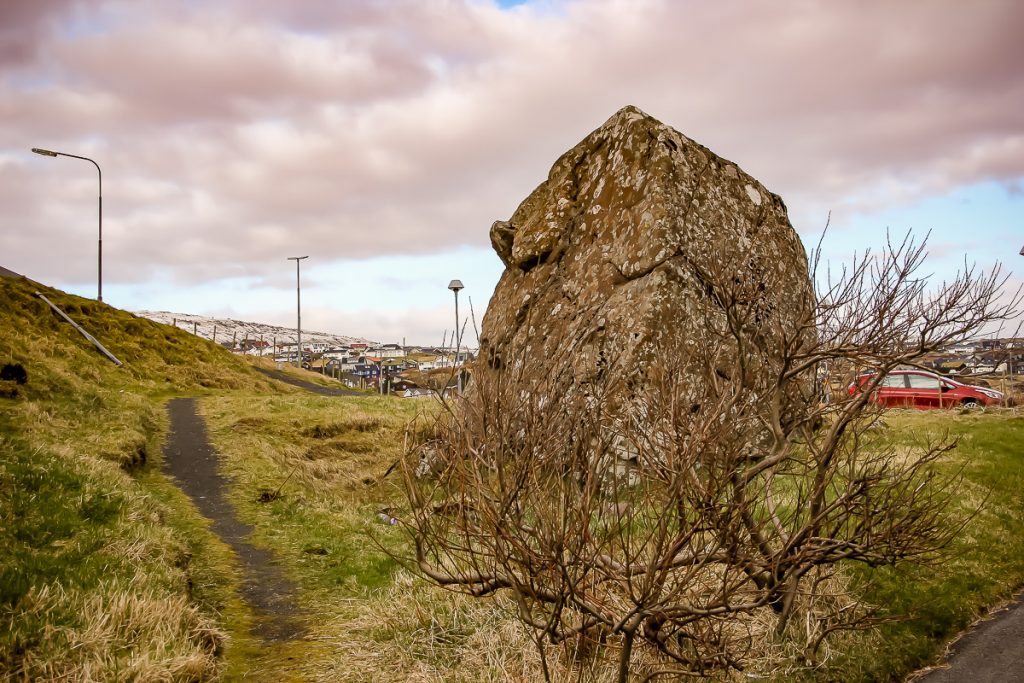
Like the Icelanders, these people believe in trolls. And in stones. This means that they do not move a boulder from the middle of a road that is under construction, but they rather make the road around it. Because they do not want to disturb the homes of the trolls (these boulders).
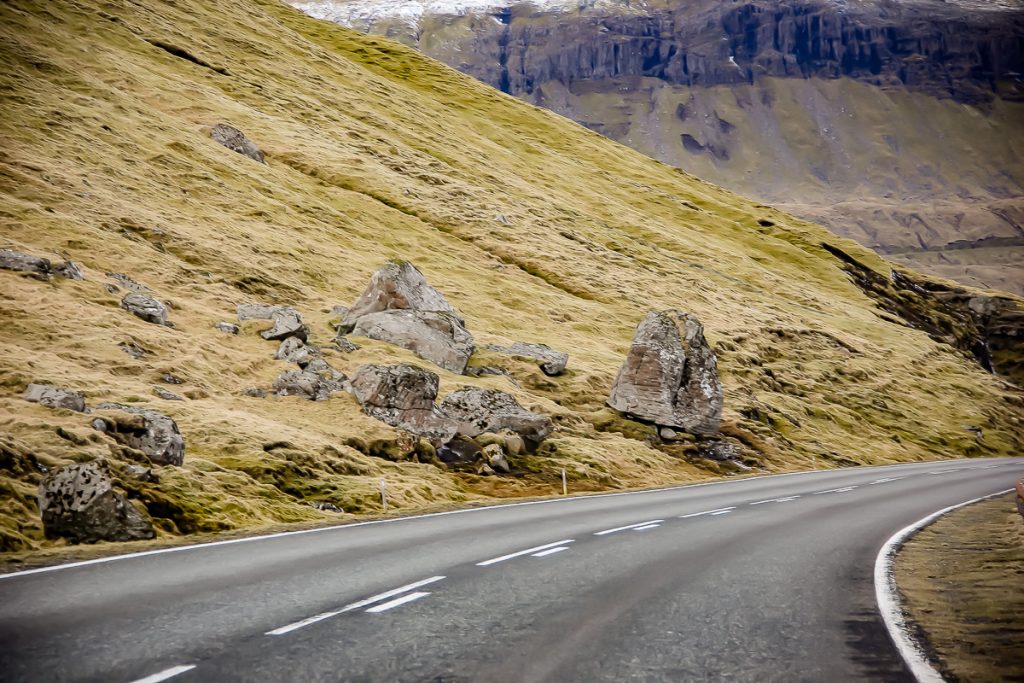
And when they make houses, if there is a boulder on that land, they adapt, sometimes even integrating it into the construction:
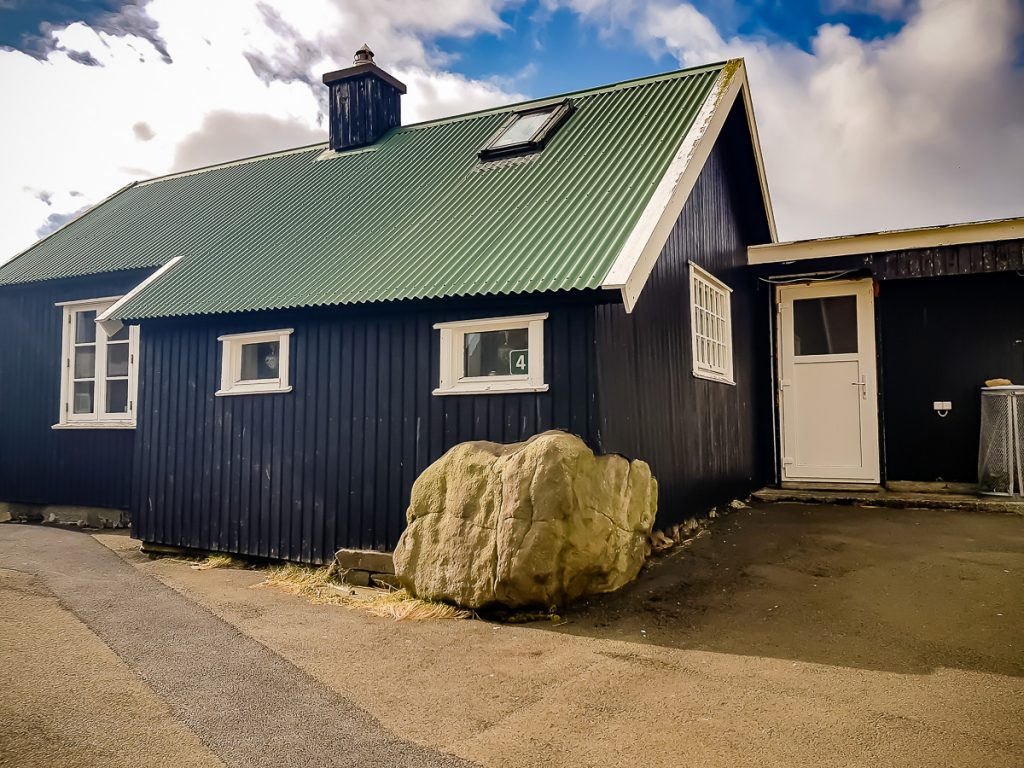
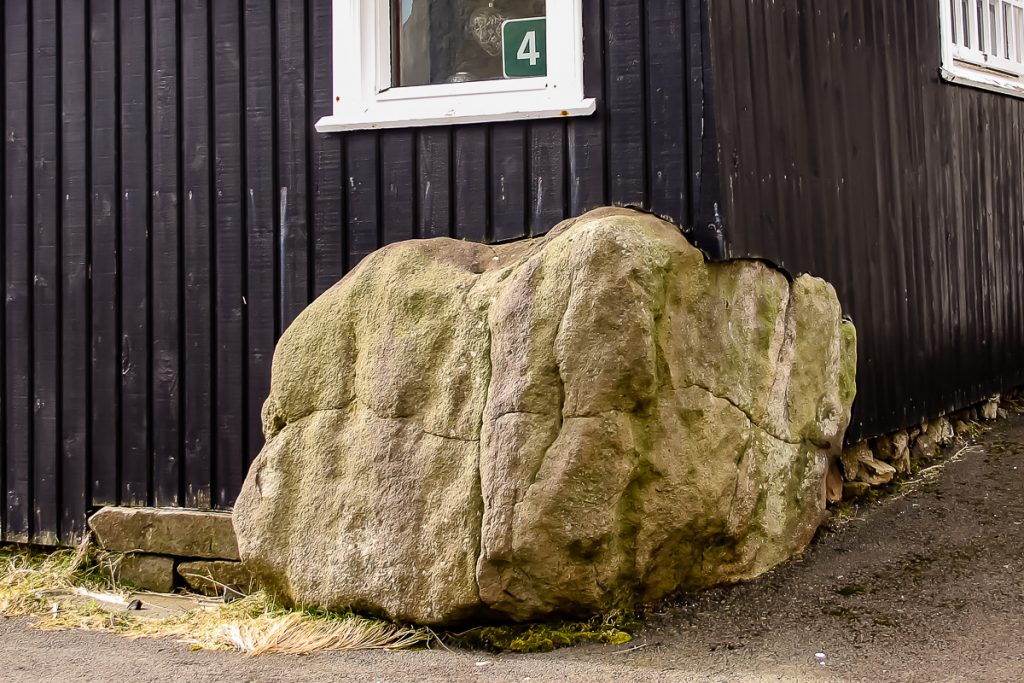
I know legends from Iceland and I have heard that here too there are incidents with the troubles suffered by those who ignored the belief in stones and trolls. Very rarely, in very special cases, a stone is moved a little and with great care from its original place.
LANGUAGE SPOKEN IN THE FAROE ISLANDS
I expected the language they spoke to be close to Danish. No way. It’s close to Icelandic! Somewhere between Icelandic and Norwegian. The Danes don’t understand them when they speak. However, the Faroese speak Danish. They learn it from the beginning at school, as they belong to Denmark.
But that’s not all. Everyone speaks English! Everywhere I went, everyone I stopped knew English. I didn’t even bother to ask “Do you speak English?” I’m not talking about the hotel receptionist or the airport employees, but also the drivers on public transportation, the saleswomen in the shops, the people stopped on the street to ask for directions.
In a country with a language as difficult as theirs, they realized that the only chance to go out into the world was for them to learn foreign languages.
I understand that most Faroese speak 5 languages! In addition to English and Danish, they also study German and Norwegian in schools. It’s a good thing I know French, which doesn’t do me any good here J.
One nice detail I found out is that they, the Faroese, speaking their language, can figure out which island the person is from. They have many dialects, although the islands are grouped and located at short distances from each other. As soon as one opens one’s mouth, they know his/her origin…
HOW MUCH IS THE SALARY IN THE FAROE ISLANDS
The average salary on the Faroe Islands is 57,458 euros per year (app 4,800 euros per month). The usual minimum is 29,768 euros per year (app 2,500 euros per month).
The highest paid are those who work in Management & Business – with an average income of 118,513 euros per year, followed by architects, with 72,559 euros per year.
If you have a bachelor’s degree, if you have seniority, your salary will skyrocket.
I am moving there!!!
THE HEALTH SYSTEM
During my travels I have always wondered what in God’s name do people in the remote or almost unpopulated villages if they have a heart attack, if they get injured or they vomit their insides. Are they programed to get sick only when they go to town?…
There are 3 hospitals in the Faroe Islands. Each in a city on an island. That’s all, 3 hospitals. For emergencies, they send one of the helicopters from the Islands. If it’s a case they can’t handle, they send it to Denmark. No supplementary costs for the patient. (As a citizen, you pay about 67 euros a month for health and you have everything. You don’t pay any doctor. Only the dentist – and it’s expensive!)
Once you arrive in Denmark as a patient, you also have access to a special hotel (named after the capital of the Islands – Tørshavn). Here are the patients who need post-surgery consultation, but here the patient’s family can stay as well. And in some cases, even the doctors.
SPORTS IN THE FAROE ISLANDS
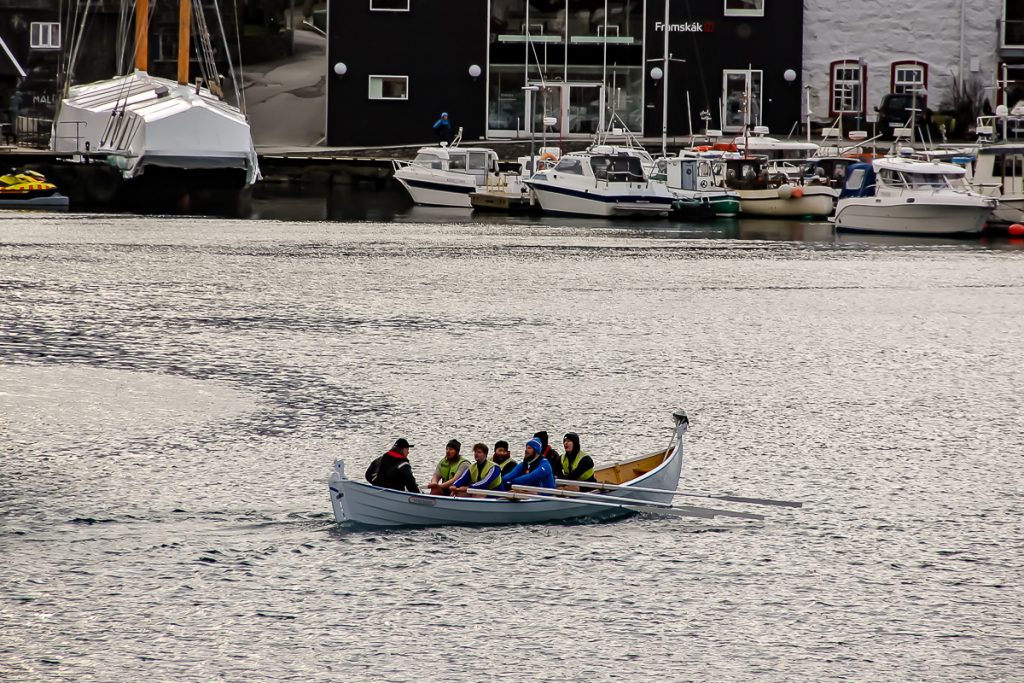
National sport is rowing.
I saw many people training in the capital, in boats with 6 oars.
But the Faroese became passionate about football! It all happened after a resounding victory with the Austrian national team, when no one gave them a chance: in the UEFA Euro 1992 qualifiers, the Faroese team produced one of the biggest shocks in the history of football, defeating Austria in September 1990 with 1-0. The Faroe were in the first match of such importance, with a team of amateur players, while Austria had just played in the World Cup.
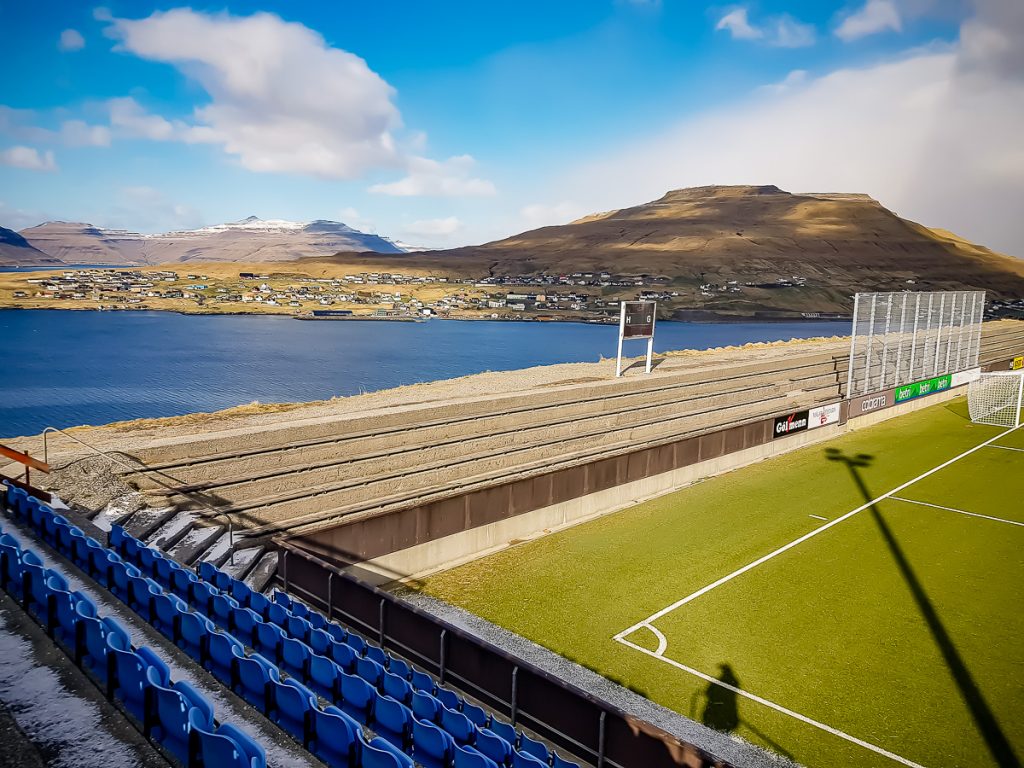
From then on, the hysteria began: all the villages wanted football fields, everyone started playing football! Even on the top of the mountain, a field was made for the villagers there, so that they could have a place where to play.
I was on the field, but beyond football, I was impressed by the view from the lawn!
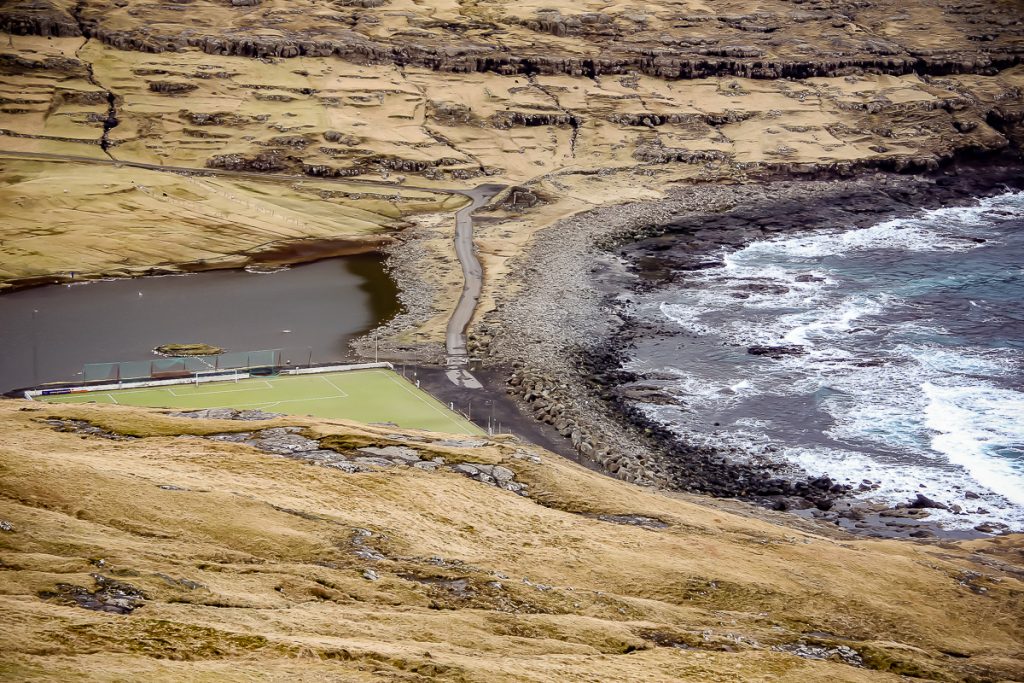
One day I arrived in the town of Eiði and I was amazed when I saw two football fields.
The first one (the one in the photo above) has already been abandoned. Standing by the ocean, the players used to throw the ball into the water. Who knows how many balls float towards Iceland now J.
The local authorities decided to build a field in the middle of the community, in a safer, better area. Said and done:
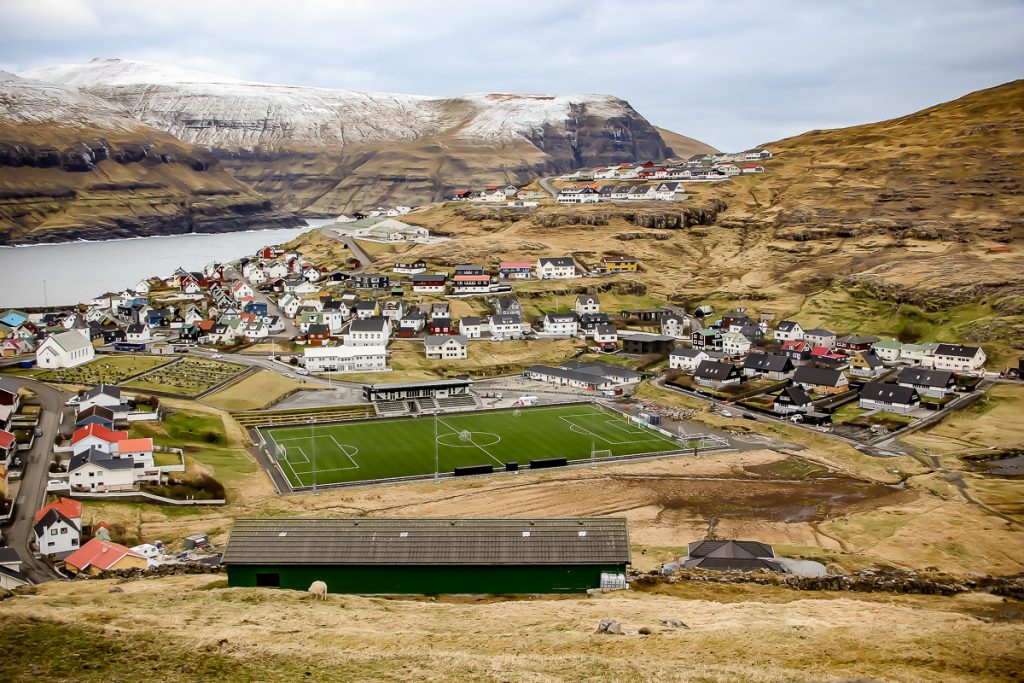
With so much water around, I wonder if these people are good swimmers. This I haven’t found out yet, but I’ve learned that it’s a bit difficult to “warm up” in the ocean, given that it’s 7 degrees Celsius – not only in March-April, when I was there, but also in the summer. But there are daring Faroese and especially women who swim in the ocean. Cool!
WEATHER IN THE FAROE ISLANDS
I’ve never seen anything like it anywhere: the weather here changes every second! Basically, you enter the hotel’s revolving door and it’s sun outside, you spin the door and when you come out, you see snow outside J.
Seriously, we drove into a tunnel several hundred meters long, on a sunny weather and when we came out, snowflakes were falling.
There were temperatures between 0 and 5 degrees Celsius at the end of March, beginning of April, when I was there. In summer, the average temperature is about 12 degrees Celsius. 15-16 degrees only on the good days! And when they have 20 degrees, for a few hours, the Faroese have a party, I think…
Winters are not cold, believe it or not. The temperature rarely drops below zero, even at night. The average temperature in winter is +3 degrees Celsius. Very rarely they had -5 degrees. My guide, who has lived here all his life, told me that the lowest temperature he caught was -7 degrees.
What killed me on a lot of occasions was the extremely cold, sharp wind, because of which I felt the temperature differently.
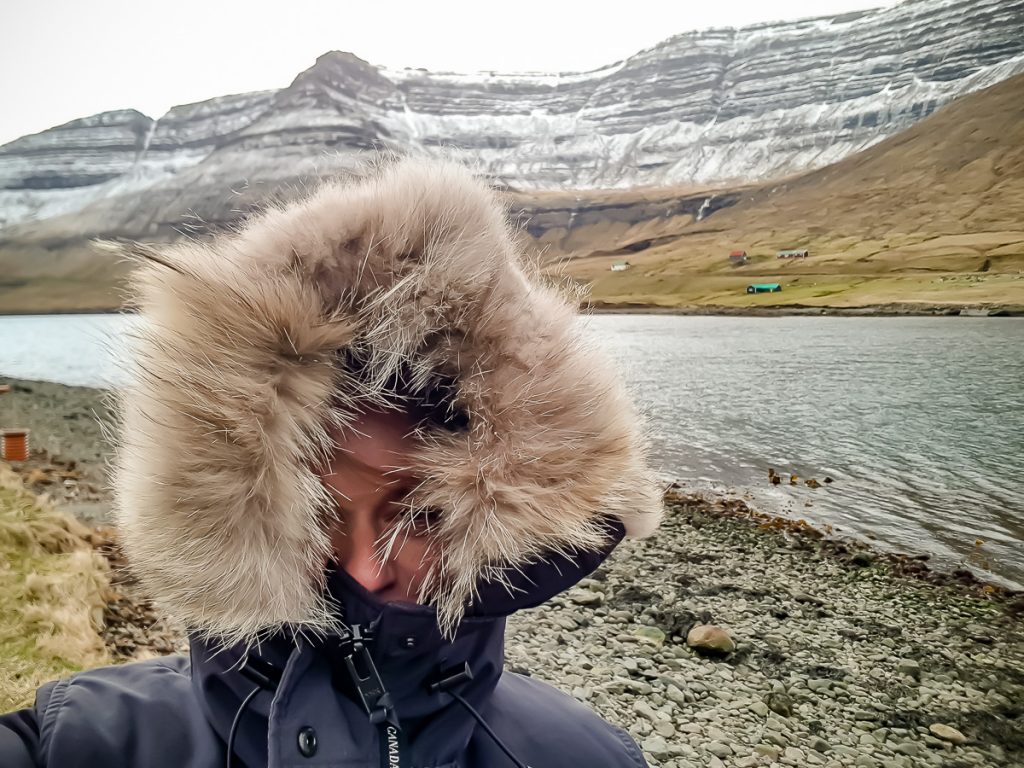
Yes, I had moments when I was completely hidden in my parka…
However, I saw in the courtyards of kindergartens girls wearing dresses and tights, and boys in sweatshirts and sneakers. That’s how it is when you are born here, what can I say?
THE FAROE ISLANDS HOUSES
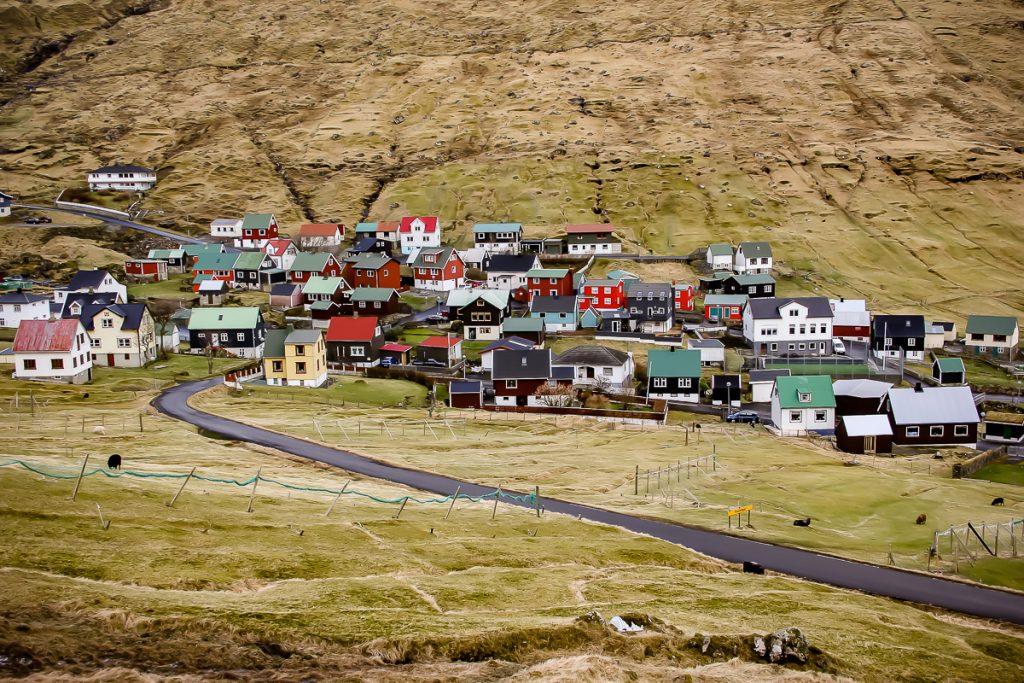
If I were to say at a first glance what their houses are like, I’d say: black with a grass roof or very colorful.
Okay, not all of them are like that, but these two features stayed with me.
It rains for about 210 days a year in the Faroe Islands. The grass roof protects the house well from the constant action of the water. At the same time, it thermally insulates the house very well! Such a roof is considered a traditional roof, which you no longer see everywhere. But some of the modern houses have kept the tradition, having the grass roof.
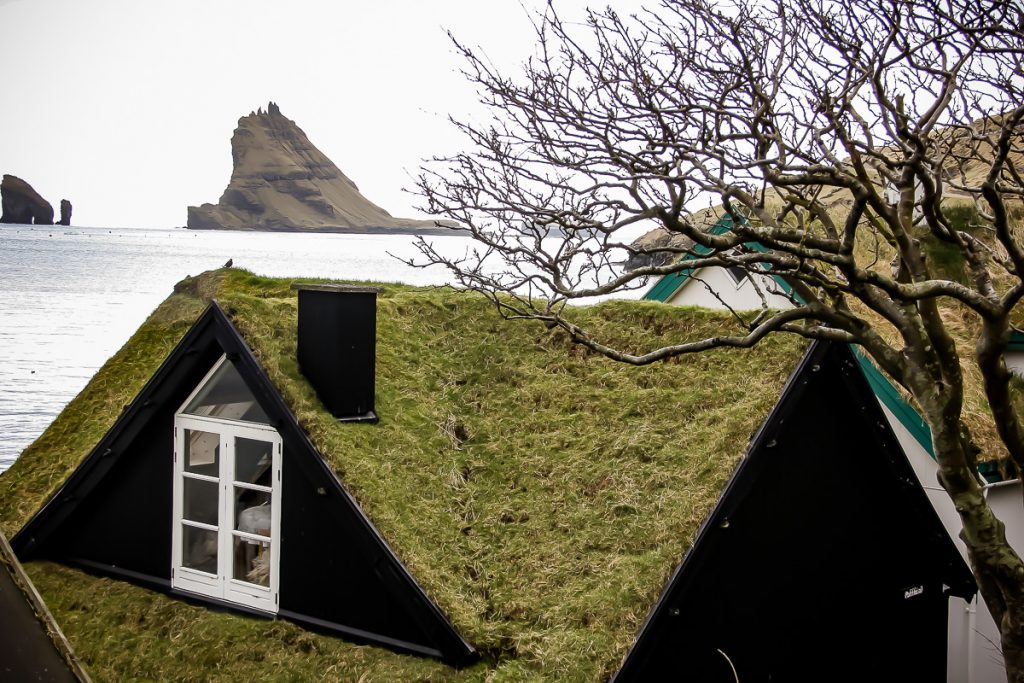
I read somewhere that they don’t use a mower to mow the grass on the roofs, but… sheep hihi. I admit I didn’t see any sheep on the roof.
I asked how they are warming up. With oil. Not with gas, as I imagined.
But what impressed me was that the Faroe Islands are among the top nations that produce sustainable energy. Over 50% of the country’s electricity comes from renewable energy sources! Their goal is that by 2030, all their electricity will come from renewable sources. (For the curious, I asked how much they pay: 0.27 euros per kw.)
An interesting thing: almost 98% of households in the Faroe Islands have wireless internet! And the plan is for every home to have internet access as soon as possible. In addition, they boast about having a very good internet connection. But here comes my national pride… I’d say that ours is better J.
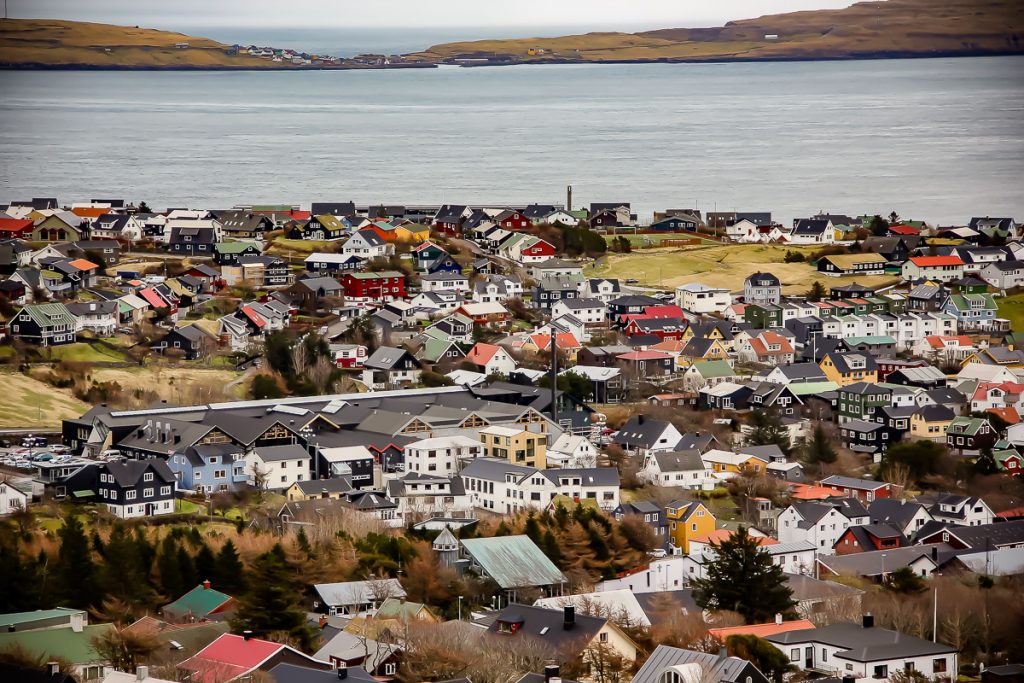
There is a great diversity in terms of houses. Both in model and in color. My guide laughs and tells me about the “wife power”: the wife who asks her husband to make their home different from their neighbor’s – both in form and in paint. And that’s how many villages became so colorful, happy and with different house models.
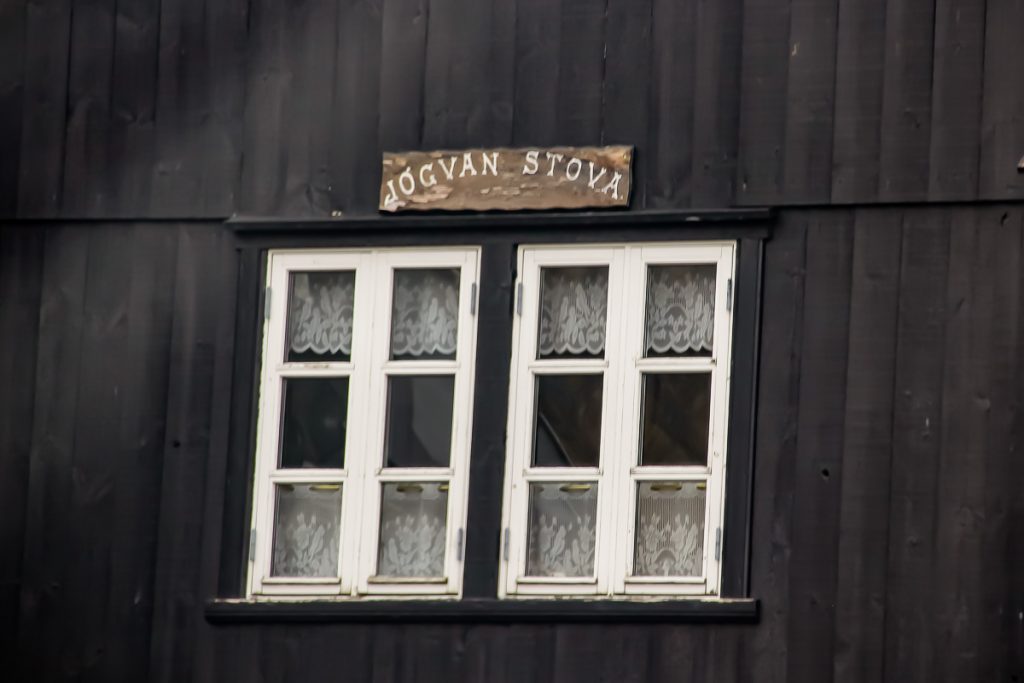
Before, there were no house numbers. The houses had names. Either the owner’s name or whatever the owner wanted.
Nowadays, there are owners who, in order to honor the past, put a plaque with the name of the house on the facade of it. I saw it in several places.
To be honest, there are some houses I would buy on the spot! No, not mansions, but small, chic houses.
I give up the idea quickly when I find out what the prices are. (And this in recent years, because it has not always been like this.)
You can buy a 500 sqm house with 200,000 euros, but in the capital, the same house reaches one million euros!
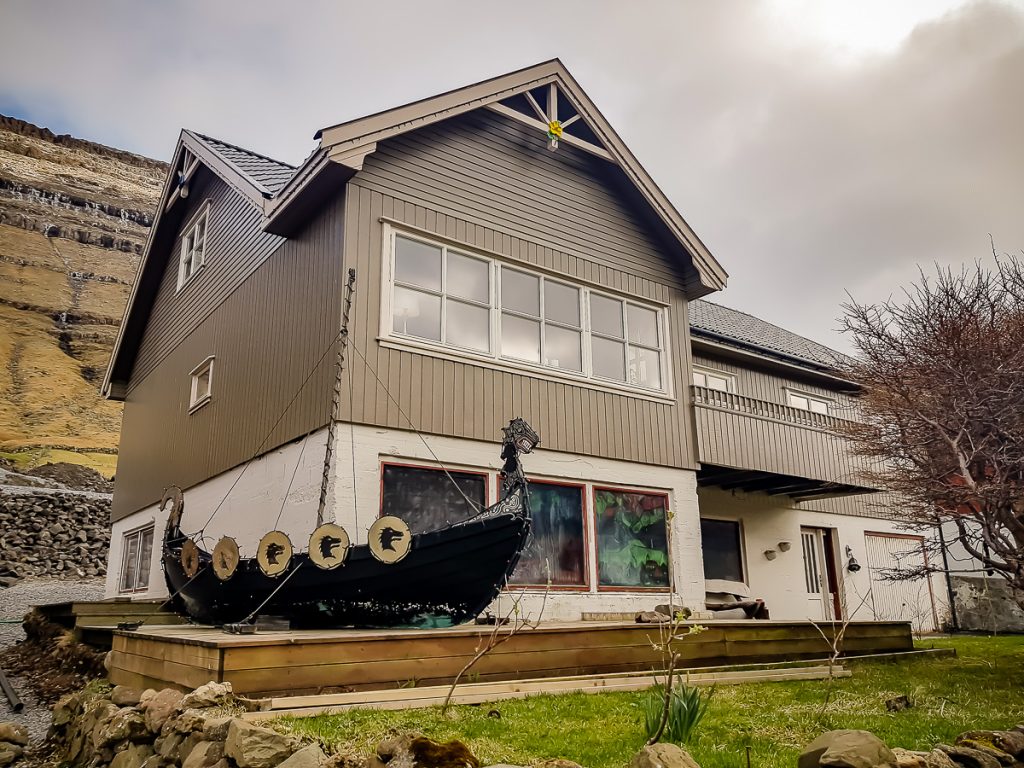
Speaking about houses, this is Livar Nysted‘s house, the one I wrote about above that he crossed the Atlantic Ocean in a rowboat, breaking a world record held for 114 years!
I couldn’t even imagine that there wasn’t a boat at his house…
The house is on the Vidoy Island, in the northern part of the archipelago.
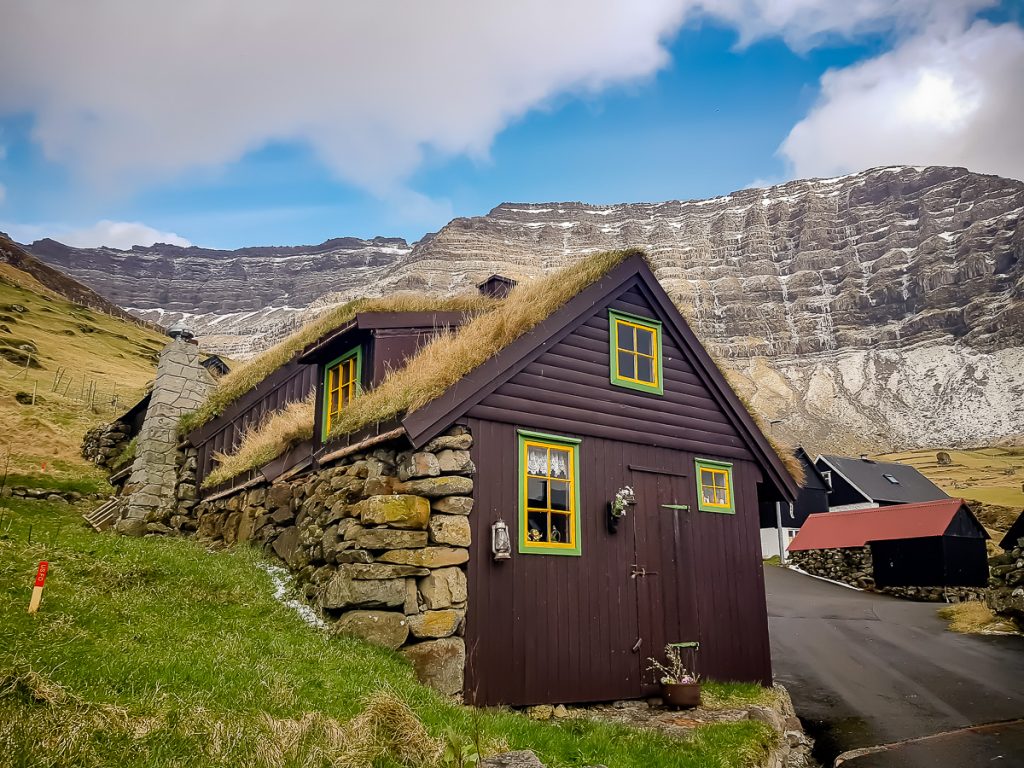
On the Kunoy Island I took a lot of pictures of this cute little house! It looks like one that came out of the stories!
Knowing it’s uninhabited, I look inside the window… The owner, who lives in the house across the street, comes out to ask us questions. As my guide is 100% Faroese, he quickly befriends him and, surprise, he lets us go inside the house!
It’s a small construction site now, because the man wants to open it for tourists this summer. He explains to us what he has to do and how he wants to open a small restaurant and then, we leave.
Wait, I can’t finish the houses chapter without showing you a special one:
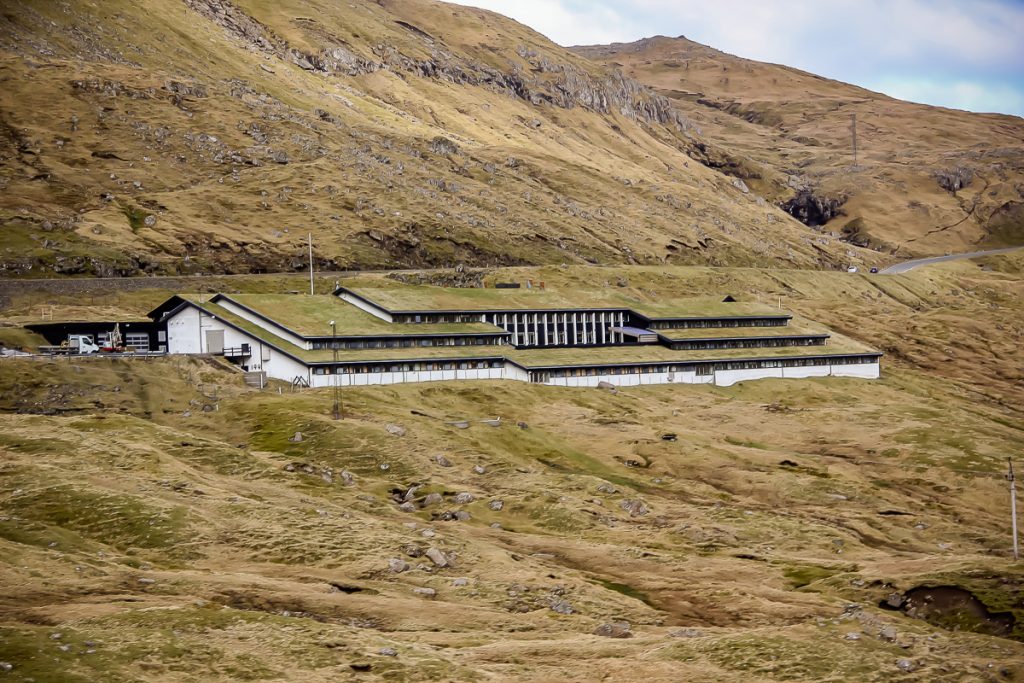
We were driving nicely on the main road of Streymoy Island, the island where the capital is located, when I saw a white building, perched on a hill/a mountain, with a grass roof and a beautiful view of the fjord.
You’d say a big company made a hotel there, a resort.
Well, no. There is no hotel. It is simply the… PRISON! What?!? Yes, the prison! By the way, the only one in the Faroe Islands.
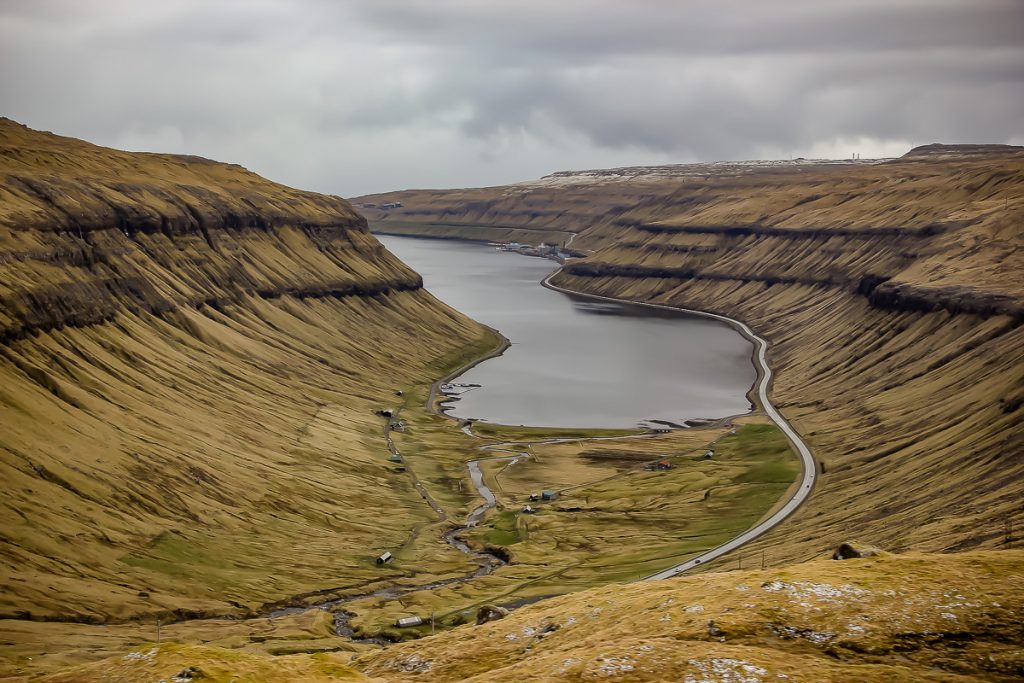
The crime rates are so low in the Islands, that this place is enough. I understand that there could be only 12 detainees here – each with his own cell, each with his own TV. (I think there would be room for more.)
Nonviolent criminals who have small penalties are brought here. The others, who commit more serious acts, are sent to prisons in Denmark.
The penitentiary also has a mini golf course, to which the detainees have access. If I take into account the enviable “view”, I’d rather suspect some of them stealing just to get here…
Yeah, well, it’s still better to be free like a bird. And speaking of birds: in the next post I’ll tell you about their national bird, but especially about my whale pursuit and about how I was about to have a heart attack when I gave 60 euros for some postcards… And about many other unique things that I found out. Right here!
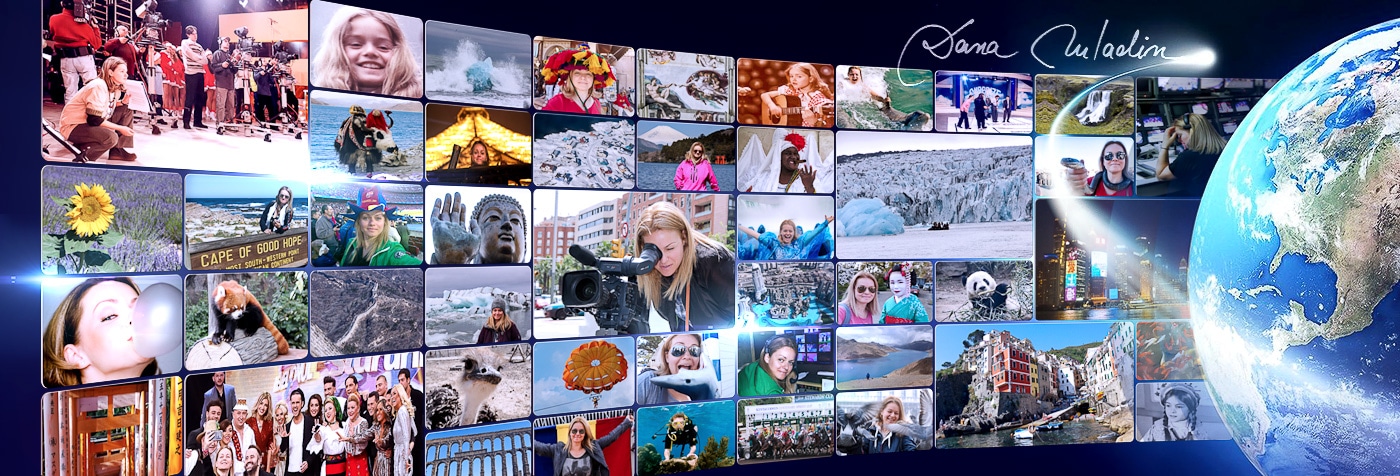

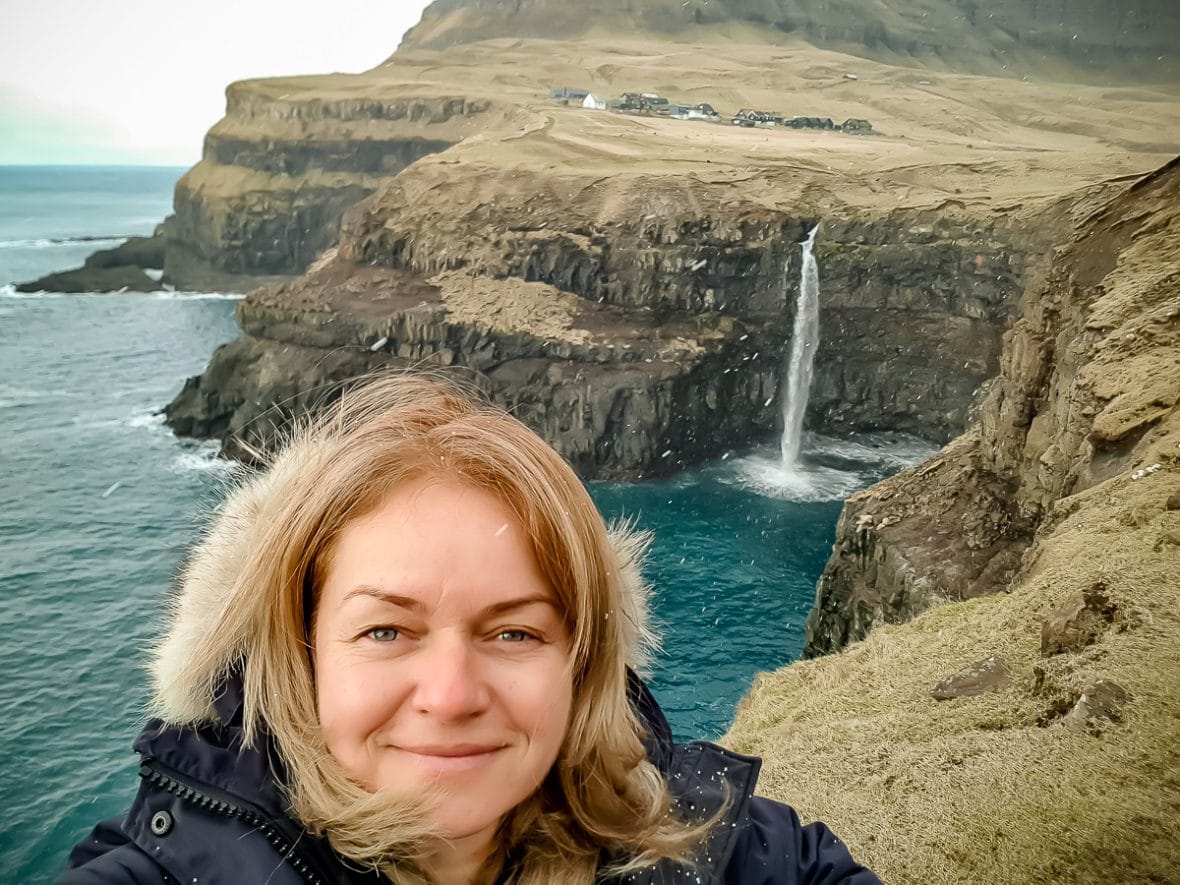
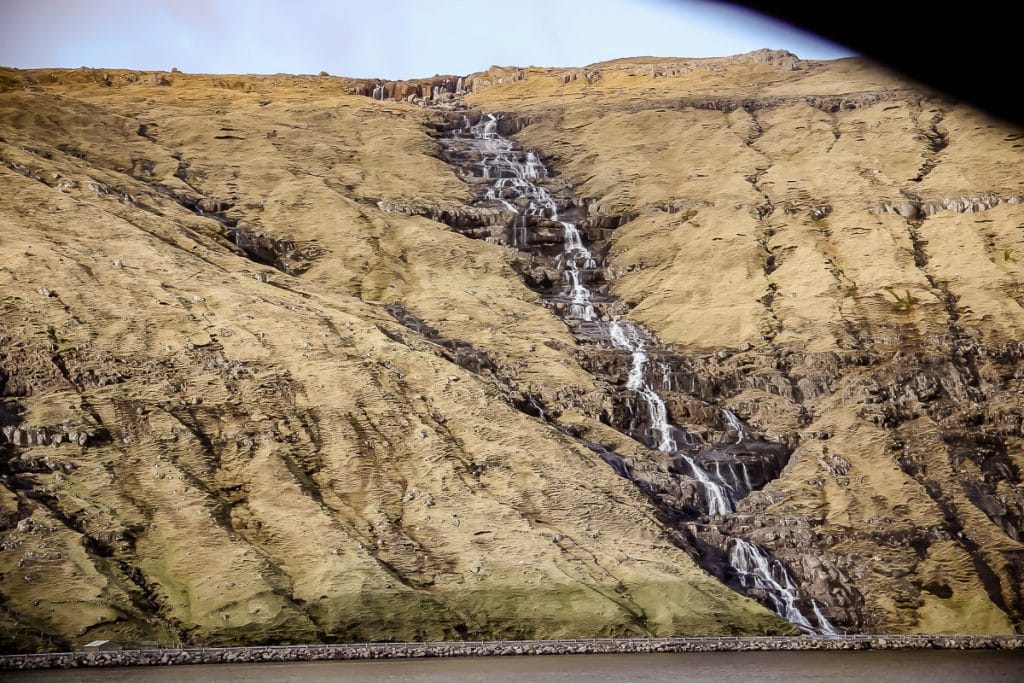
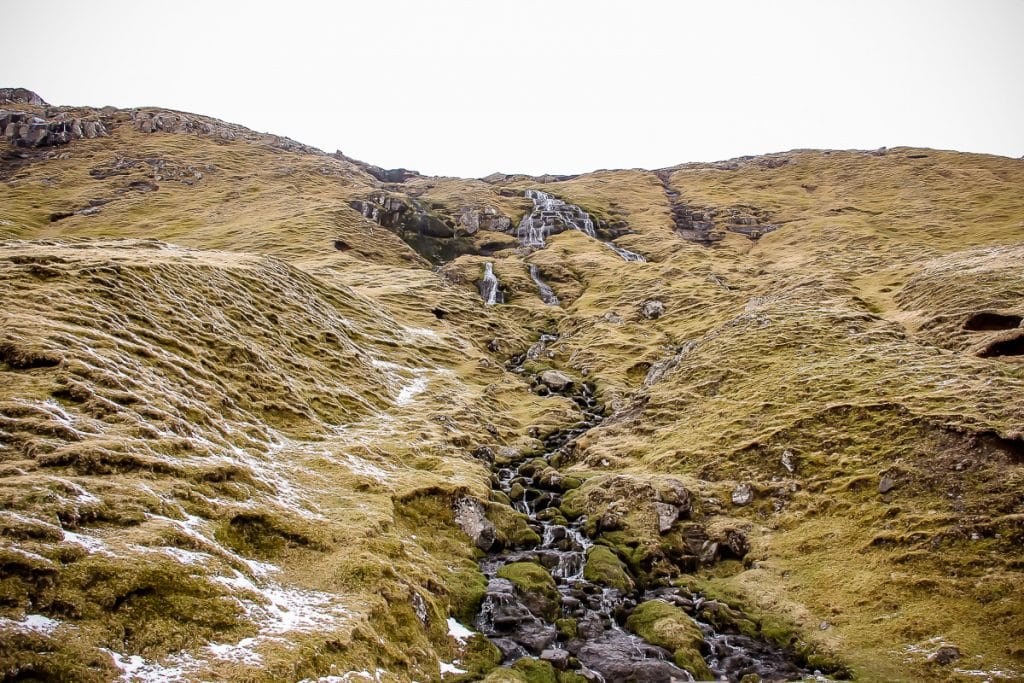
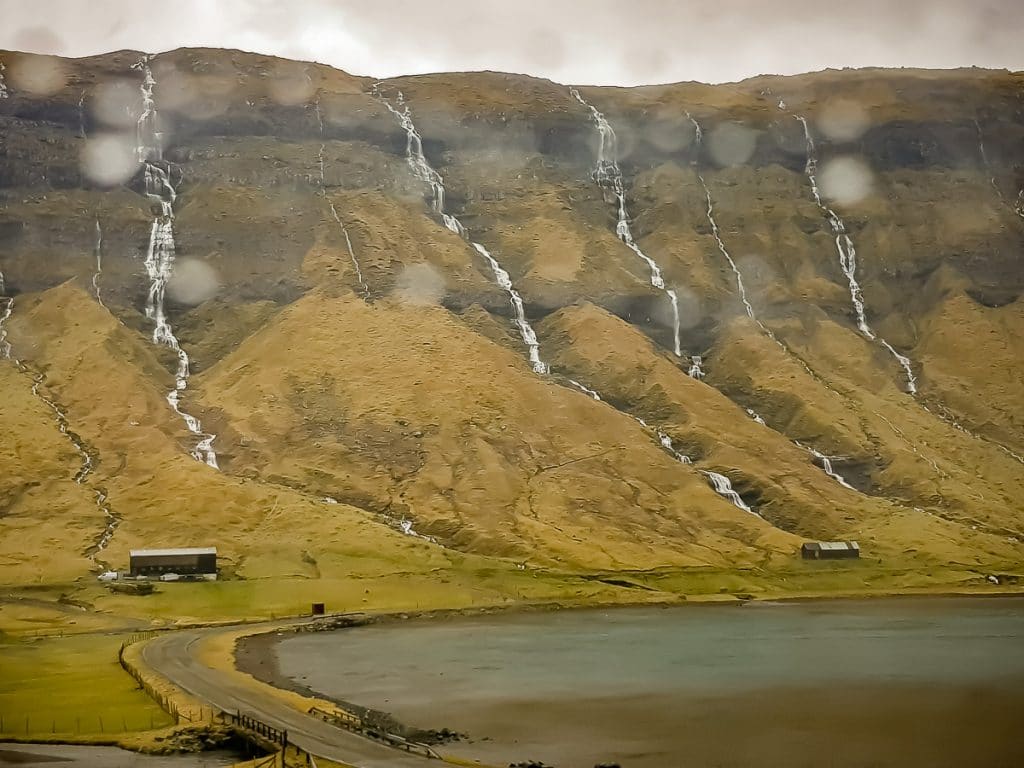
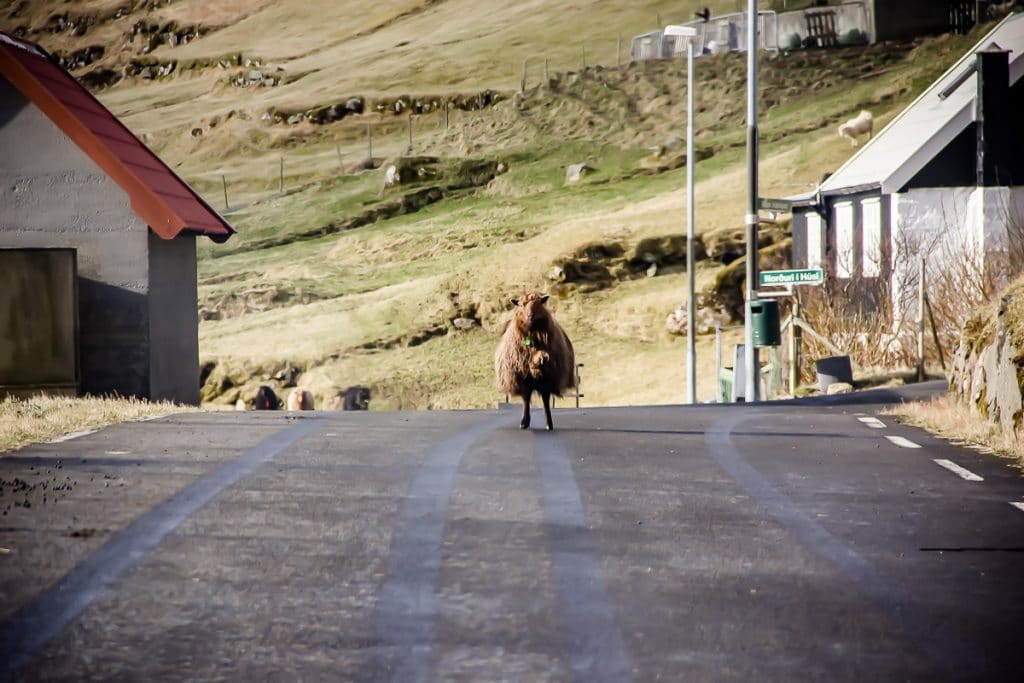
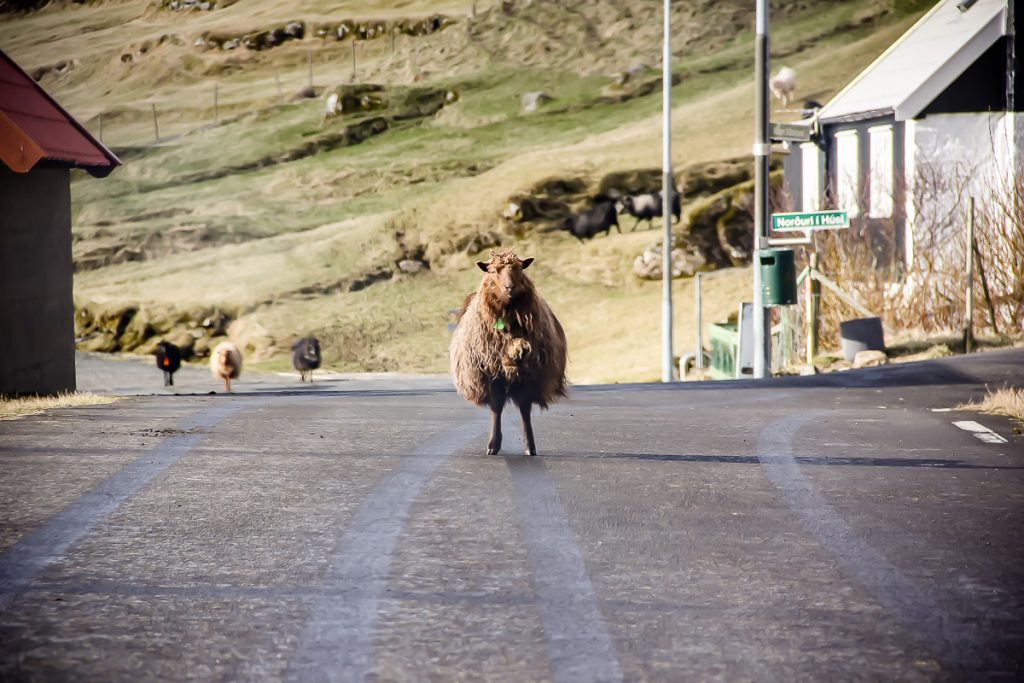
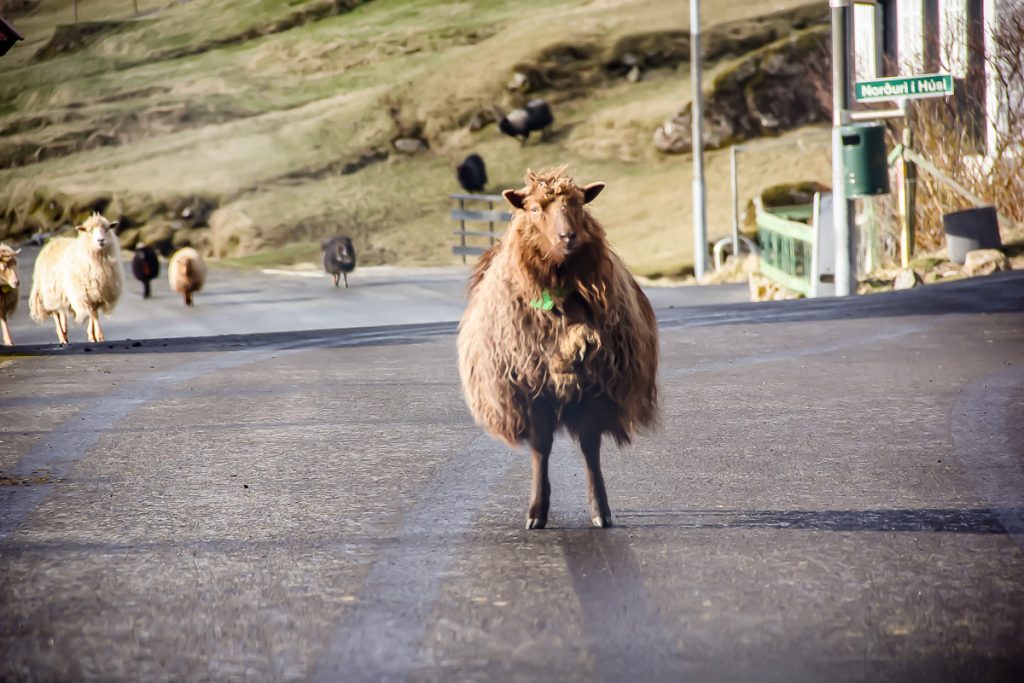
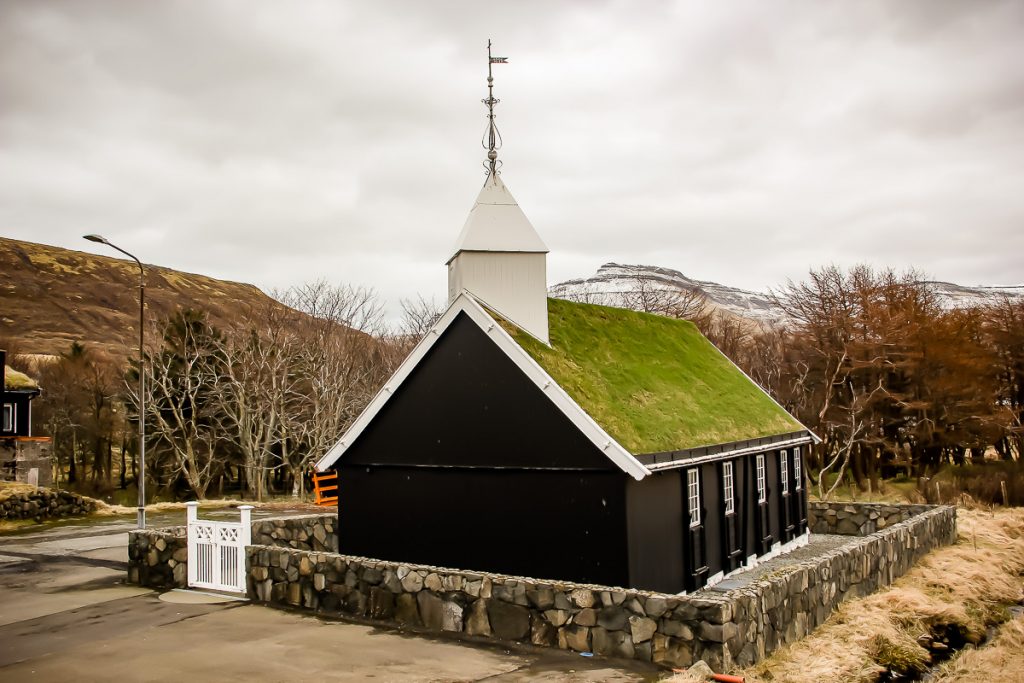
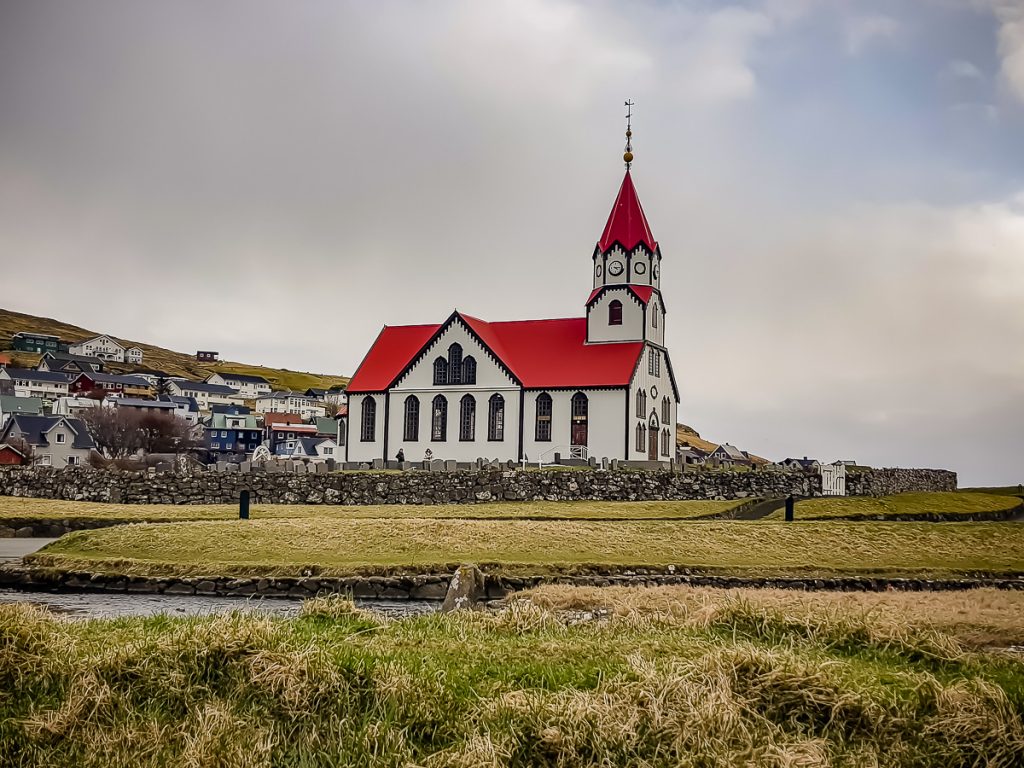
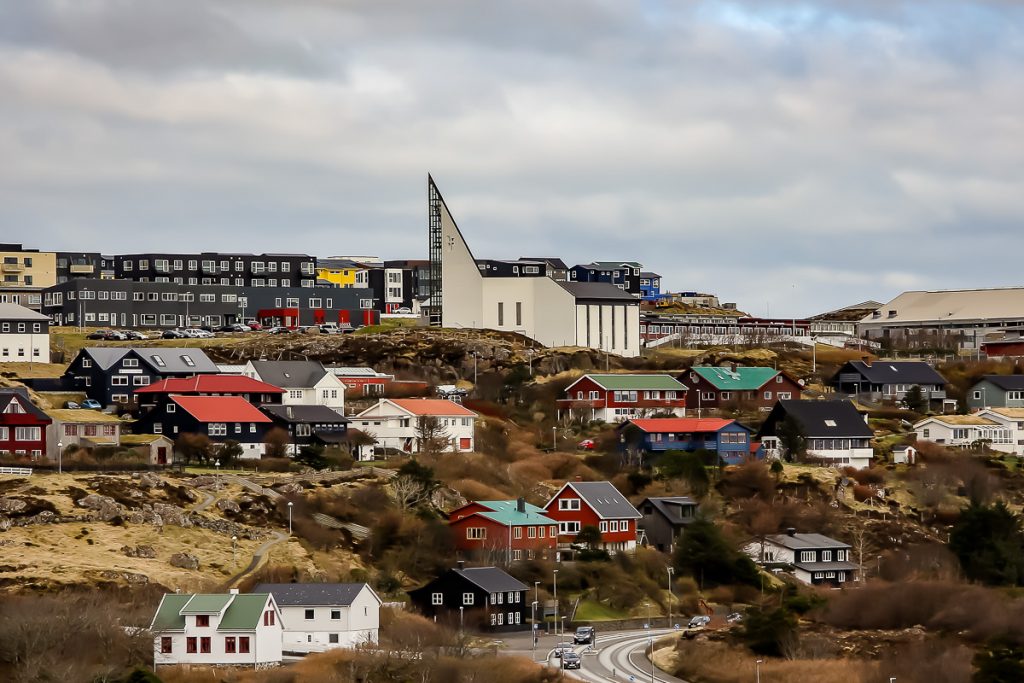
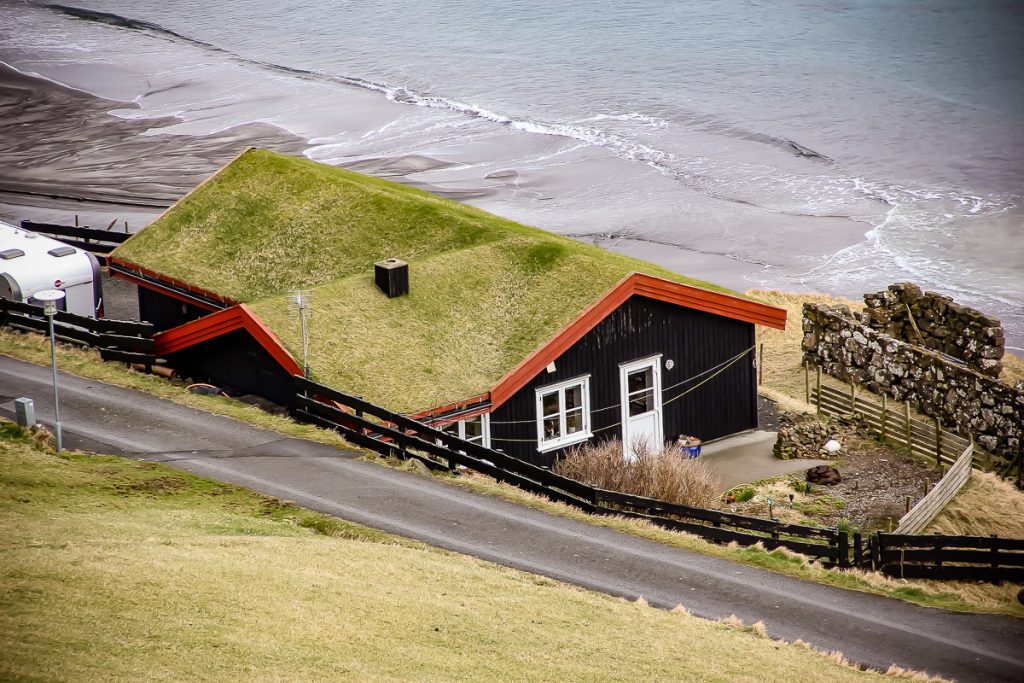
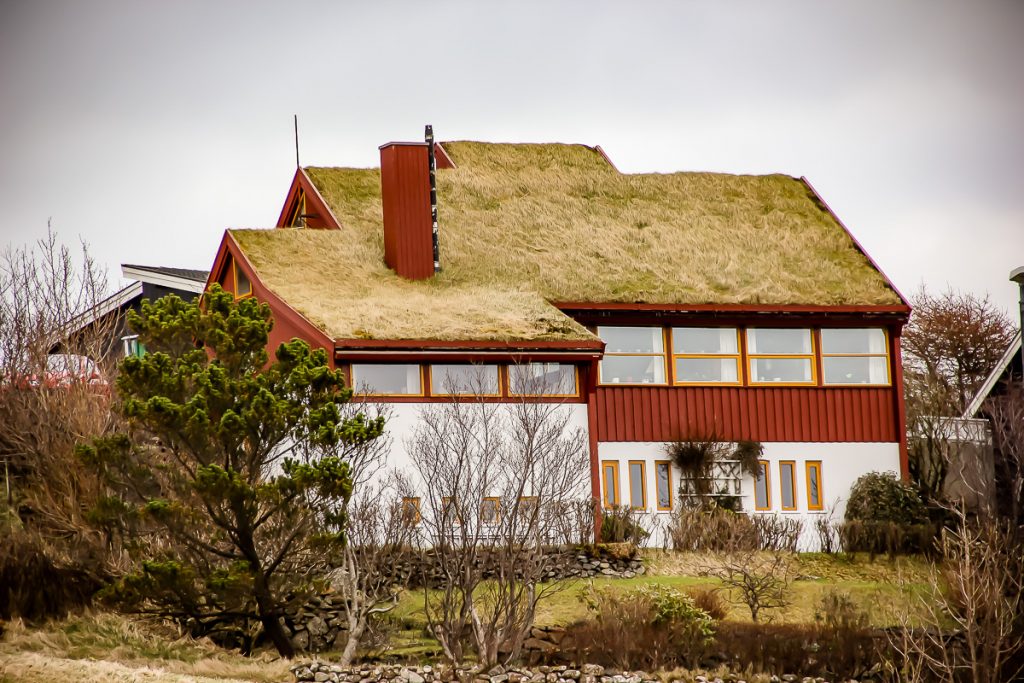
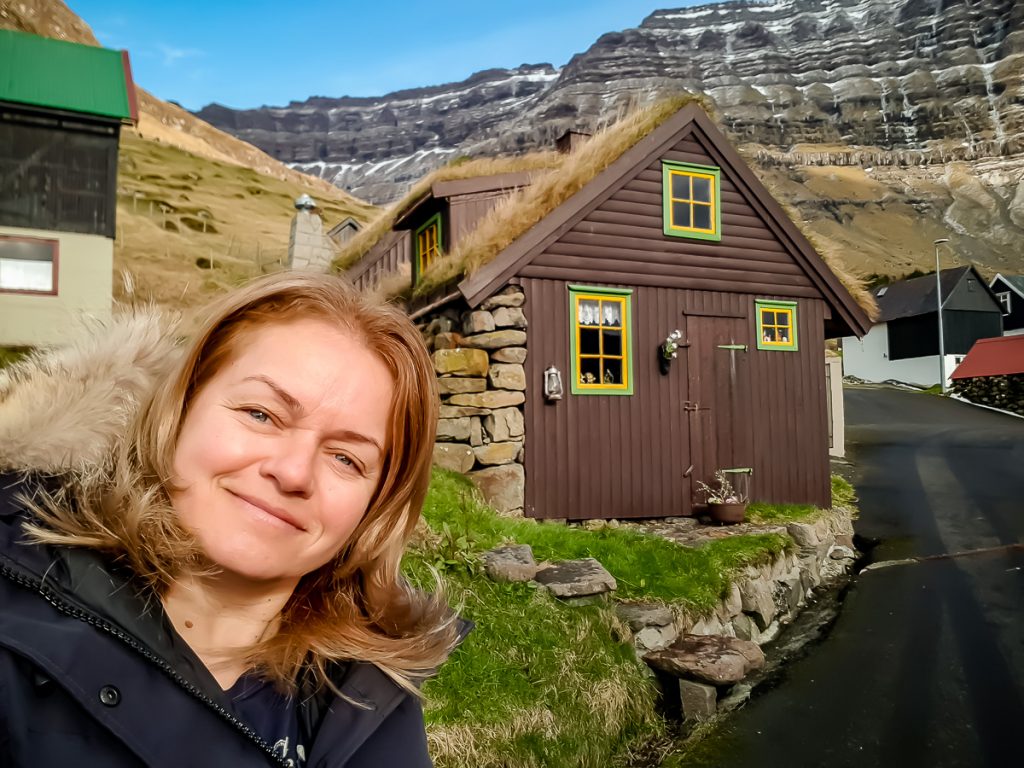

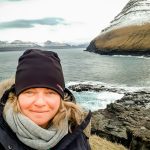
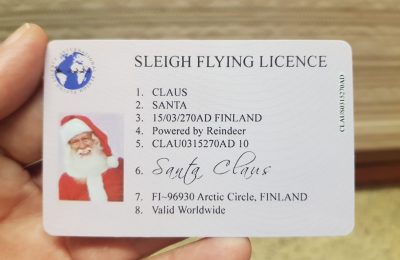


2 Comments
Matilda
14 June 2022 at 12:09Esti fantastica …traiesc calatoriile tale ,ca si cand ti’as fi alaturi …te imbratisez si astept urmatoarele !❤
Dana Mladin
14 June 2022 at 18:03Multumesc mult! Ma bucur ca le cititi. Abia astept sa postez a doua parte…